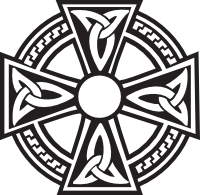Dec 12, 2023 Newspaper Article, Part 3 of 6
Cranbrook Daily Townsman
An Orthodox perspective – 11th to 16th Century
There was only One Holy and Catholic (Universal) Church for the first 1000 years of Christianity. Much was established. The 27 books that eventually were accepted as the “New Testament” in the late 4th Century (earliest verification: Athanasius’s Easter Letter in 367) were all written before the close of the 1st Century. Many other early 1st and 2nd century writings; Shepard of Hermes, the Didache, Epistles of Clement, Polycarp, Ignatius, Irenaeus, Barnabas…were also used in various Churches during the 1st three centuries. Heretical books and teachings; Gnostic Gospels of Peter, Thomas, Philip, Mary…and heresies such as Arianism, Gnosticism, Nestorianism… were all rejected. The Orthodox Church loves the Bible, we wrote and gave it to the Church, and decided on the 27 books which comprise the New Testament. We venerate it and place it 1st amongst the vast written treasure of the Church, but hold that the true “Word of God” from before the beginning of Creation is Christ. He came to establish His Church, not to give us a bible.
Toward the end of the first millennium, an addition to the second part of the Nicen/Constantinople Creed began showing up in various places. It added the words “and the Son” (filioque in Latin) to the procession of the Holy Spirit and became known as the filioque controversy. In 1054, the bishop of Rome unilaterally added it to the Creed. The other 4 bishops of the historical Patriarchies were appalled that any bishop would feel he had the power or right to change the Creed that had united them for the last 700 years. They were also greatly concerned with the heretical effects this would have on the understanding of the Holy Trinity. It was the beginning of the split between Rome and the Eastern Orthodox Church. This split was cemented in 1205 when the 4th Roman Crusade took a side-trip on their way to Jerusalem and conquered Constantinople, placed a Latin bishop on the Patriarchal throne there, and stole many of their precious sacred treasures.
From an Orthodox perspective, after the split, the Roman bishop took on authority over the Church he had never been granted. He had always been granted a primacy of honour, but never of authority over the entire Church. He made many new additions and changes to what had been believed “everywhere, always by everyone,” (St. Vincent of Lerins 5th C test of Christian truth.) Not allowing married priests, denying communion to infants and children, purgatory and indulgences, the new absolute authority of the Pope, a more wrathful God, a new scholastic rationalistic understanding of God… further separated the two branches of the original Church.
In 1517, after almost 500 years of change after the split between Rome and the Orthodox Patriarchs, Roman Catholic priest Martin Luther arrives on the scene and starts the “Protestant Reformation.” Objecting to 95 perceived errors in the Roman Church, mostly focusing on Purgatory and Papal indulgences, Luther formulated the novel and destructive doctrine of “Sola Scriptura” – the bible and the bible alone – to explain where his authority came from. He and even more drastically the reformers who followed him, Zwingli, Calvin, Knox, the Anabaptists…threw out the baby with the bathwater in many cases. Sola Scriptura opened the door to the modern Protestant problem of individual interpretation of the bible becoming the main teaching standard, with little reference to 1500 years of detailed and historically validated interpretation by the Church. Should we not at least give a vote, or better yet a veto, to those who decided which books would be included in the universally accepted list of the 27 books of the New Testament regarding their interpretation? We all agree they got the list right.
Once the individual interpretation of the bible became the standard, multitudes of charismatic reformers – bible “experts” – came up with additional and often conflicting interpretations based on their own personal revelations. Various Churches were formed and continue to be formed at an amazing rate. All of the major “Mainline Protestant” denominations have now split into many different factions and new novel Christian Churches are formed daily. A quick internet inquiry of how many different churches there are now will give a number between 30,000 and 50,000 and there will have been a bunch more started this week. All of them split off the Roman Catholic Church after 1500 when you trace the origins back. There has never been an Orthodox “reformation.”
Image: Icon of Nicean Creed
